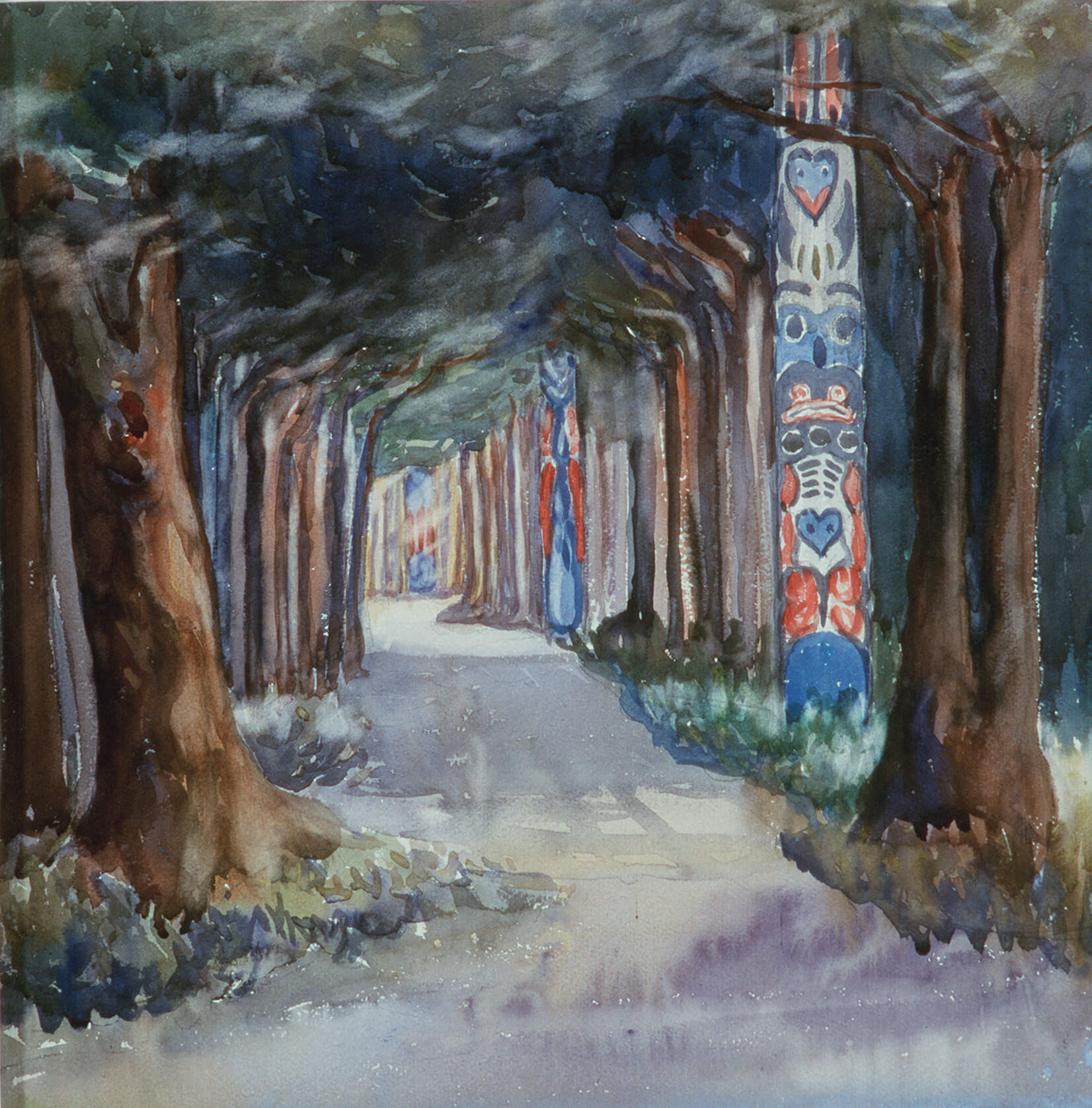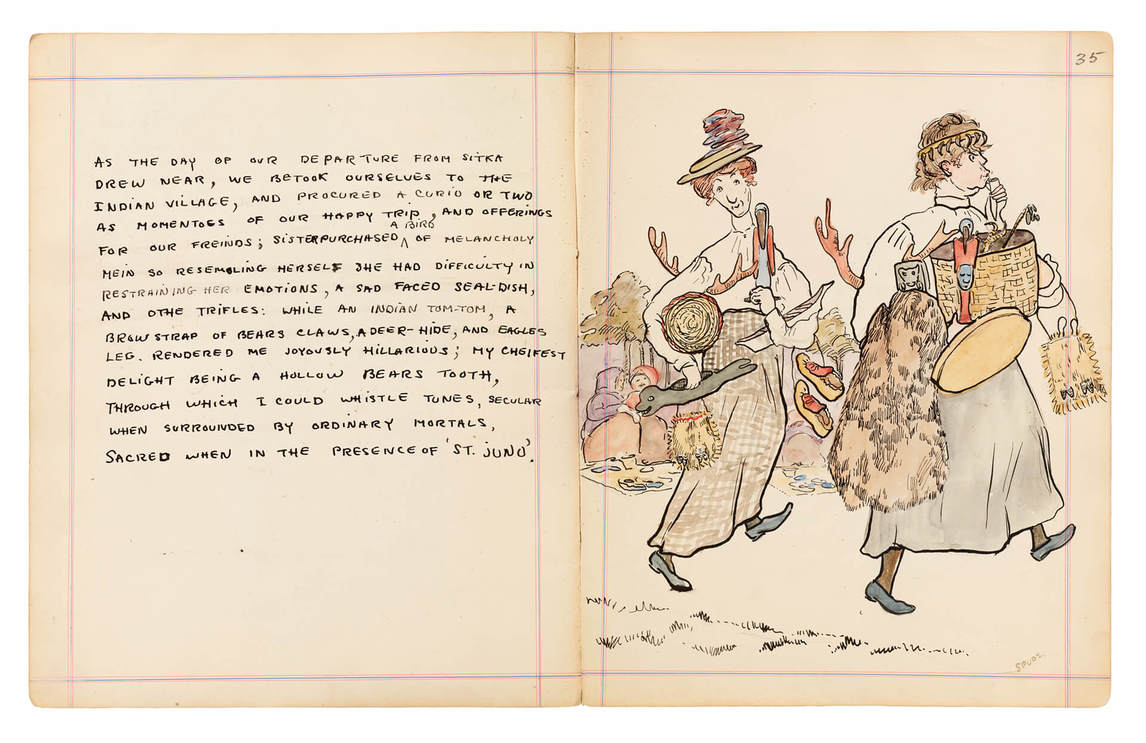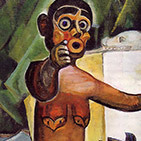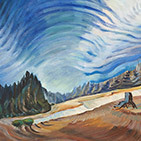Totem Walk at Sitka 1907

Emily Carr, Totem Walk at Sitka, 1907
Watercolour on paper, 38.5 x 38.5 cm
Art Gallery of Greater Victoria

Totem Walk at Sitka shows the level of Carr’s artistic ability after her early conservative training in San Francisco and London, England. Made during the voyage to Alaska that she took with her sister Alice (a trip she chronicled extensively in her notebook and in sketches), this is an important but awkward painting. She was conflicted at the time: collecting “curios” made by Aboriginal people while simultaneously grappling with the conceptual and stylistic achievements of their culture.
From 1907 to 1910 Carr embarked on a series of paintings that reveal her ethnographic framing of Aboriginal subjects. In these works she documents villages and their inhabitants; she depicts totem poles, structures, and people, focusing, on occasion, on individuals. Executed primarily in watercolour, Totem Walk at Sitka reveals the traditional naturalistic techniques of composition, style, and colouration that she learned in art school. She records a group of Tlingit and Haida poles that had been displaced from their traditional sites and erected within a newly constructed park after their display at the St. Louis World’s Fair in 1904. As she later noted in her autobiography, she found totem poles “not easy to draw. Some of them are very high, they are elaborately carved, deep symbolical carving, as much or more attention paid to the attributes of the creature as to its form. The Indian used distortion, sometimes to fill spaces but mostly for more powerful expressing than would have been possible had he depicted actualities―gaining strength, weight, power by accentuation.”
Totem Walk at Sitka marks an epiphany and a turning point for Carr: it was at Sitka, on the encouragement of an American artist, speculated to be Theodore J. Richardson (1855–1914), that she decided to pursue her project of documenting the totem poles and Aboriginal villages in the province. She wrote, “The Indian people and their Art touched me deeply…. By the time I reached home my mind was made up. I was going to picture totem poles in their own village settings, as complete a collection of them as I could.”

 About the Author
About the Author
 More Online Art Books
More Online Art Books
 Acknowledgements
Acknowledgements